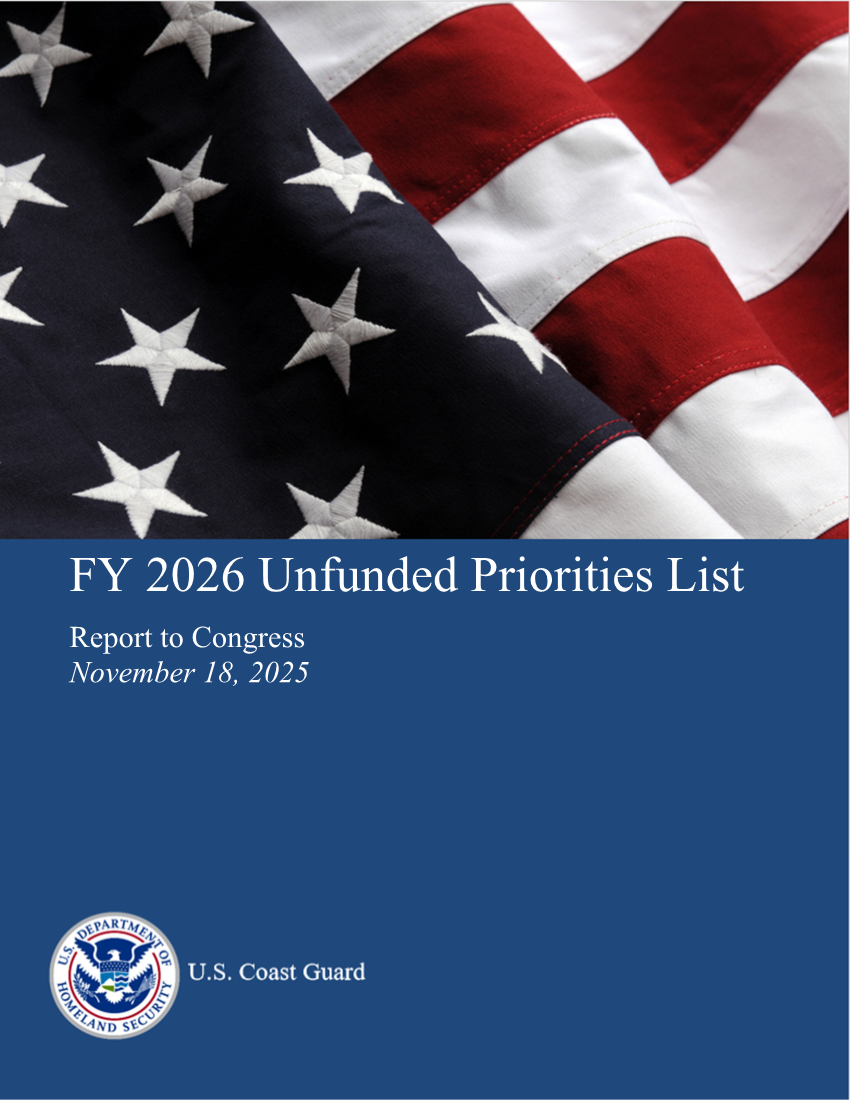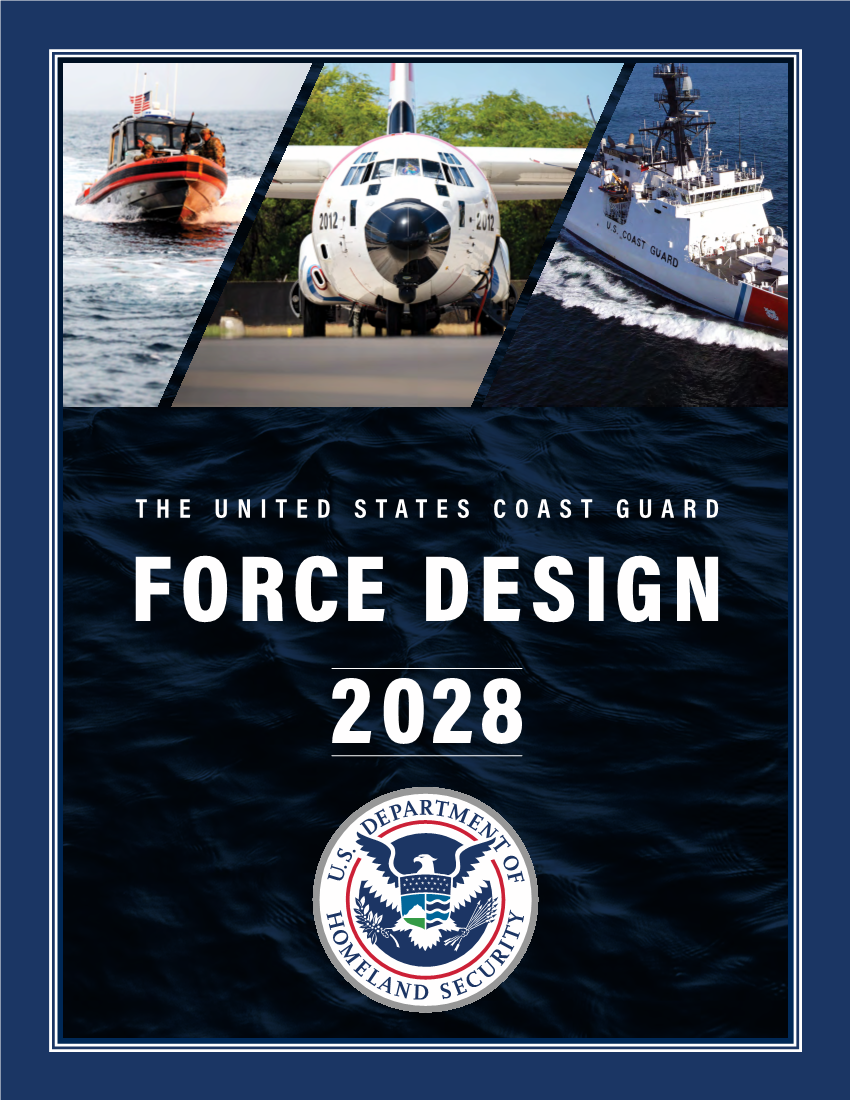 | FY 2026 Unfunded Priorities List | I am pleased to present the following report, “FY 2026 Unfunded Priorities List,” prepared by the U.S. Coast Guard.
Section 5108 of Title 14 and Section 3113 of Title 50, United States Code, directs the annual submission of a list of approved but unfunded Coast Guard priorities and the funds needed for each priority. | 11/18/2025 | |
 | REPORT - FD28 EXECUTIVE REPORT _1166_V14.PDF | Force Design 2028 Executive Summary | 5/27/2025 | |
 | CG ACTION ORDER 1 INCREASING COAST GUARD OPERATIONAL PRESENCE 21 JANUARY 2025_508.PDF | Executive Order Clarifying the Military's Role in Protecting the Territorial
Integrity of the United States of 20 January 2025, Section 2
(b) Proclamation Declaring a National Emergency at the Southern Border of the
United States of 20 January 2025
(c) Executive Order Designating Cartels and Other Organizations as Foreign Terrorist
. Organizations and Specially Designated Global Terrorists of 20 January 2025
(d) Proclamation Guaranteeing the States Protection Against Invasion of 20 January
2025
(e) Executive Order Protecting the American People Against Invasion of 20 January
2025 •
(f) Executive Order Securing Our Borders of 20 January 2025 | | |